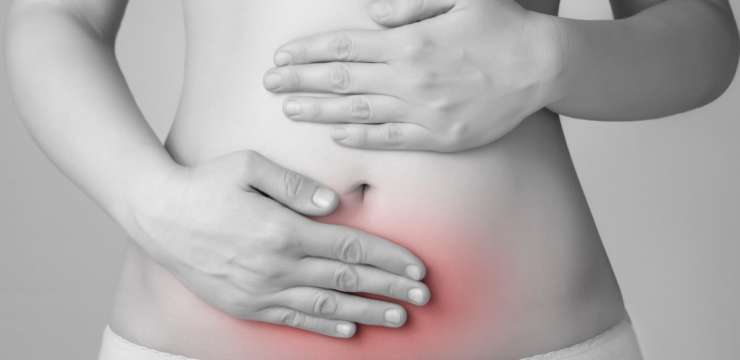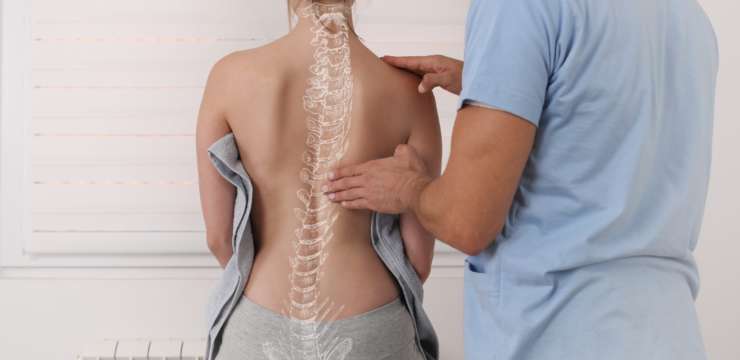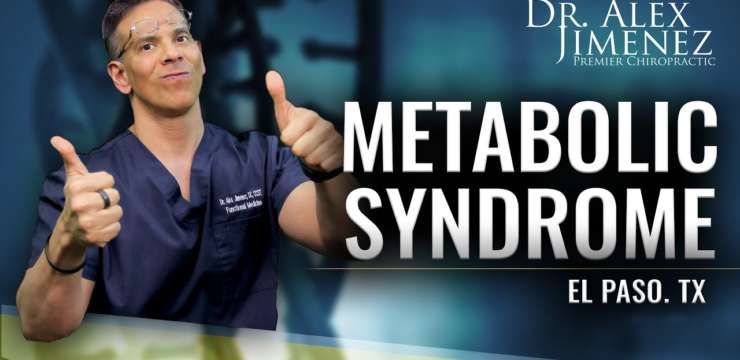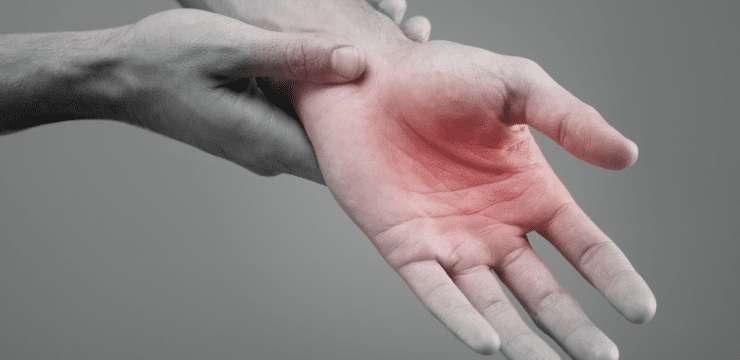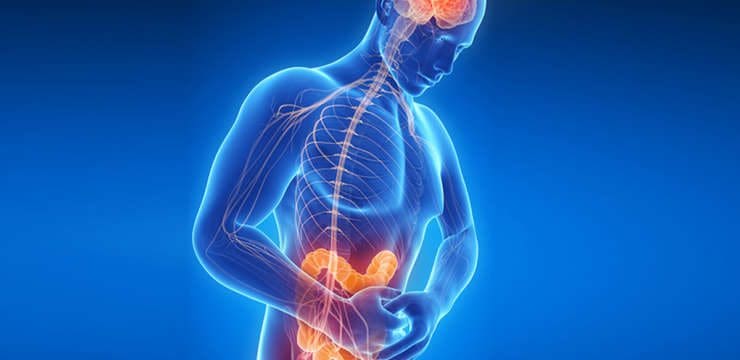
Gain essential insights into the cervical spine, auto injuries, and discover information on treatment options and preventive measures.
Picture this: you’re cruising down the road, humming to your favorite tune, when—bam!—a fender-bender turns your neck into a grumpy, stiff companion. Motor vehicle accidents (MVAs) are no laughing matter, especially when they leave you with cervical spinal pain that feels like your neck is staging a protest. But fear not, dear reader, for help is at hand! In this guide, we’ll dive into the nitty-gritty of why MVAs cause neck pain, how these injuries lead to musculoskeletal woes, and the treatments that can get you back to twirling through life like Gomez Addams dancing with Morticia. We’ll spotlight Dr. Alexander Jimenez, a chiropractic wizard in El Paso, Texas, whose expertise in treating MVA victims is as legendary as a perfectly executed tango. So, buckle up (safely, of course) as we explore this topic with a sprinkle of humor and a lot of science.
Table of Contents
Introduction to Cervical Spinal Pain from MVAs
Motor vehicle accidents are a leading cause of cervical spinal pain, a condition that can range from a mild nuisance to a debilitating issue. Each year, the National Highway Traffic Safety Administration reports over 5 million motor vehicle accidents (MVAs) in the United States, resulting in more than 2 million injuries (NHTSA Crash Data). A staggering 869,000 of these involve cervical spine injuries treated in hospitals (Freeman & Leith, 2020). Rear-end collisions, in particular, are notorious culprits, with approximately 1.7 million occurring annually, leading to 500,000 injuries and 1,700 deaths (Jimenez, 2016). These accidents often cause the neck to whip back and forth, much like a spring being stretched and released, resulting in injuries like whiplash, fractures, or disc damage.
Cervical spinal pain from MVAs isn’t just a fleeting ache—it can linger like an uninvited guest at a party. Research suggests that up to 50% of individuals may still experience neck pain a year after an accident, with some facing chronic symptoms (Nolet et al., 2019). This guide will unravel the clinical reasons behind these injuries, explore their impact on musculoskeletal health, and highlight effective treatments, with a special focus on the work of Dr. Alexander Jimenez in El Paso.
References
- Freeman, M. D., & Leith, W. M. (2020). Estimating the number of traffic crash-related cervical spine injuries in the United States; An analysis and comparison of national crash and hospital data. Accident Analysis and Prevention, 142, Article 105571. Accident Analysis
- Jimenez, A. (2016). Auto injuries causing chronic neck pain.
- Nolet, P. S., Emary, P. C., Kristman, V. L., Murnaghan, K., Zeegers, M. P., & Freeman, M. D. (2019). Exposure to a motor vehicle collision and the risk of future neck pain: A systematic review and meta-analysis. PM & R, 11(11), 1228-1239. Neck Pain Meta-Analysis
Clinical Rationale for Cervical Spinal Pain
Mechanisms of Injury
When an MVA occurs, the neck is particularly vulnerable due to its flexibility and lack of protection compared to other parts of the body. The cervical spine, comprising seven vertebrae, supports the head while protecting the spinal cord. During a crash, rapid movements like flexion (forward bending), extension (backward bending), rotation, or compression can damage muscles, ligaments, discs, or bones. For instance, in a rear-end collision, the head may lag as the body is pushed forward, causing hyperextension, which can lead to whiplash or even fractures, such as the Hangman fracture (C2 vertebra) (StatPearls, 2021).
Specific injuries from MVAs include:
- Spinal cord compression: Can cause central cord syndrome, leading to neurological deficits.
- Hyperextension injuries: Common in whiplash, potentially with avulsion fractures.
- Facet subluxation or fracture dislocation: Disrupts spinal stability.
- Disc injuries: Herniations or bulges that press on nerves.
- Epidural hematoma or bony fractures: Severe cases requiring urgent intervention (Cervical Spine Procedures Policy, 2024).
These injuries often result from high-energy impacts, such as high-speed crashes or rollovers. Still, even low-speed collisions (as low as five mph) can cause significant damage (Utah Accident Clinic, 2023).
Diagnosis and Imaging
Diagnosing cervical spinal injuries requires a thorough approach. Clinicians utilize advanced imaging techniques, such as X-rays, MRIs, or CT scans, to diagnose fractures, dislocations, or soft tissue injuries. For example, an MRI can reveal cord compression or disc herniation corresponding to symptoms like radiculopathy (nerve pain) or myelopathy (spinal cord dysfunction). The use of these tools ensures accurate identification of the injury’s extent, guiding treatment decisions (Cervical Spine Procedures Policy, 2024).
References
- Cervical Spine Procedures Policy. (2024)
- StatPearls. (2021). Cervical injury. Cervical Injury
- Utah Accident Clinic. (2023). How chiropractic care can help with whiplash and neck pain after a car accident. Utah Accident Clinic
Role in Musculoskeletal Injuries
From Acute to Chronic Pain
Cervical spinal injuries from MVAs often lead to musculoskeletal issues, primarily neck pain, which can become chronic if untreated. Whiplash, the most common injury associated with motor vehicle accidents (MVAs), involves soft tissue damage to muscles and ligaments, resulting in pain, stiffness, and reduced range of motion. A systematic review found that individuals with a history of MVA-related neck injury are 2.3 times more likely to experience future neck pain, with 50% reporting symptoms a year later (Nolet et al., 2019). In a study from Rotterdam, 63% of MVA patients had continuous neck pain after one year, compared to 40% of those with non-MVA-related neck pain (Vos et al., 2008).
Chronic pain can also stem from disc injuries or facet joint damage, which may cause radiating pain or neurological symptoms. Factors like age, gender (women are at higher risk), and pre-existing conditions increase the likelihood of persistent pain (Vos et al., 2008). Left untreated, these injuries can lead to psychological issues like depression, especially if pain persists beyond three months (Utah Therapeutic Massage, 2022).
Long-Term Consequences
The long-term effects of MVA-related cervical injuries can be significant. A 2009 British study noted that 5% of MVA victims may be permanently disabled, and over 5% experience pain for a decade or more (Jimenez, 2016). Severe cases, like spinal cord injuries, can result in tetraplegia or paraplegia, drastically affecting quality of life (Scientific Reports, 2022).
References
- Nolet, P. S., Emary, P. C., Kristman, V. L., Murnaghan, K., Zeegers, M. P., & Freeman, M. D. (2019). Exposure to a motor vehicle collision and the risk of future neck pain: A systematic review and meta-analysis. PM & R, 11(11), 1228-1239. Neck Pain Meta-Analysis
- Vos, C., et al. (2008). Impact of motor vehicle accidents on neck pain and disability in general practice. British Journal of General Practice, 58(554), 624-629. Neck Pain Study
- Jimenez, A. (2016). Auto injuries causing chronic neck pain.
- Utah Therapeutic Massage. (2022). Neck pain 2 years after a car accident – What could be wrong? Utah Therapeutic Massage
- Scientific Reports. (2022). Current status of traumatic spinal cord injury caused by traffic accident in Northern China. Spinal Cord Injury
Personal Injury Rehabilitation- Video
Treatment Approaches
Immediate Medical Attention
After an MVA, seeking immediate medical attention is critical to diagnose and treat cervical injuries before they worsen. Even minor accidents can cause hidden damage, as adrenaline can initially mask pain (Oakbrook Medical Group, 2023). Doctors may order imaging tests to assess for fractures, dislocations, or soft tissue injuries. In severe cases, procedures like cervical discectomy, fusion, or laminectomy may be necessary, particularly for spinal cord compression or unstable fractures (Cervical Spine Procedures Policy, 2024).
Chiropractic Care
Chiropractic care is a cornerstone of treatment for MVA-related neck pain, offering a non-invasive approach to restore spinal alignment and reduce inflammation. Techniques include:
- Spinal adjustments: Gentle manipulations to correct misalignments and improve joint mobility.
- Soft tissue therapy: To relieve muscle tension and reduce scar tissue.
- Rehabilitative exercises: To strengthen neck muscles and restore range of motion (Brookdale Health, n.d.).
Dr. Alexander Jimenez, with over 30 years of experience, utilizes these methods in conjunction with advanced imaging to create personalized treatment plans. His approach emphasizes natural healing, avoiding reliance on painkillers, which can have side effects (Cedar Park Chiropractic, 2023).
Other Treatments
Physical therapy complements chiropractic care by focusing on exercises that strengthen and improve flexibility. In some cases, pain management with medications or, rarely, surgery may be required for severe injuries like disc herniations or fractures. Dr. Jimenez’s clinic also incorporates nutritional counseling and wellness programs to support overall recovery (Jimenez, n.d.).
References
- Cervical Spine Procedures Policy. (2024).
- Brookdale Health. (n.d.). How chiropractors treat neck pain after a car accident. Chiropractic Treatment
- Cedar Park Chiropractic. (2023). 8 reasons why you need to visit a chiropractor after a car accident. Chiropractic Benefits
- Oakbrook Medical Group. (2023). Should I see a chiropractor after being in a car accident? Chiropractic Post-Accident
- Jimenez, A. (n.d.). Dr. Alex Jimenez D.C. staff. Dr. Jimenez Staff
Dr. Alexander Jimenez’s Expertise
Background and Qualifications
Dr. Alexander Jimenez, DC, APRN, FNP-BC, is a chiropractic luminary in El Paso with over 30 years of experience in the field. A graduate of the National University of Health Sciences, he specializes in treating neck and back pain, sciatica, and sports injuries. His clinic, Injury Medical & Chiropractic Clinic, is renowned for its patient-centered approach, earning accolades like the Top Rated El Paso Chiropractor Award from 2015 to 2024 (Jimenez, 2025). Patients praise his dedication, with testimonials highlighting his ability to address pain triggers and improve mobility (Yelp, 2016).
Treatment Approach
Dr. Jimenez’s treatment philosophy is holistic, combining chiropractic adjustments with advanced therapies, such as the PUSH-as-Rx system, which focuses on enhancing agility, strength, and mobility. He utilizes diagnostic tools such as X-rays and MRIs to pinpoint the causes of injuries, ensuring that treatment plans are tailored to each individual. His clinic’s “Patient-Focused Functional Mobility Treatment Plans” include manual therapy, mobility training, and nutritional guidance to promote long-term recovery (Jimenez, n.d.).
Liaison Role
Beyond medical care, Dr. Jimenez serves as a vital link between healthcare and legal systems in personal injury cases. He provides detailed medical reports and documentation, which are essential for insurance claims or legal proceedings, ensuring that patients receive both quality care and support for their claims (Premier Care Chiropractic, 2024).
References
- Jimenez, A. (2025). Dr. Alexander Jimenez DC, APRN, FNP-BC, IFMCP, CFMP, ATN. LinkedIn Profile
- Jimenez, A. (n.d.). Dr. Alex Jimenez D.C. staff. Dr. Jimenez Staff
- Yelp. (2016). Alex Jimenez DC, Injury Medical & Chiropractic Clinic. Yelp Reviews
- Premier Care Chiropractic. (2024). How long after a car accident should you see a chiropractor? Chiropractic Timing
Personal Injury Cases in El Paso
In El Paso, MVAs are a significant source of personal injury cases, given the city’s busy roads and proximity to major highways. Cervical spinal injuries from these accidents often lead to legal claims due to their impact on quality of life and medical costs. Dr. Jimenez’s expertise is invaluable here, as he not only treats the physical injuries but also provides comprehensive documentation to support personal injury claims. His ability to correlate clinical findings with imaging results strengthens legal cases, ensuring victims receive fair compensation (Jimenez, 2025).
His clinic’s integration of chiropractic care, diagnostic evaluations, and legal support makes it a go-to resource for El Pasoans. Patient testimonials on platforms like YouTube highlight transformative recoveries, underscoring his impact on the community (YouTube Testimonials).
References
- Jimenez, A. (2025). Dr. Alexander Jimenez DC, APRN, FNP-BC, IFMCP, CFMP, ATN. LinkedIn Profile
- YouTube. (n.d.). Patients discuss why they choose a chiropractic specialist. YouTube Testimonials
Prevention Strategies
While treatment is essential, preventing cervical spinal injuries is even better. Here are some tips to reduce your risk:
- Wear a seatbelt: Reduces the risk of severe injuries by securing the body during a crash.
- Adjust headrests: Properly positioning the headrest can help minimize the risk of whiplash in rear-end collisions.
- Drive safely: Avoid distractions and maintain a safe speed to reduce the risk of accidents.
- Maintain vehicle safety: Ensure that airbags and other safety features are functioning properly.
These measures, combined with early intervention following an accident, can significantly reduce the impact of motor vehicle accidents (MVAs) on your cervical spine.
Conclusion
Cervical spinal pain from motor vehicle accidents is a complex issue that can lead to chronic neck pain and significant life disruptions if not addressed promptly. Understanding the mechanisms behind these injuries, seeking early treatment, and working with experienced practitioners like Dr. Alexander Jimenez can make all the difference. His comprehensive approach, blending chiropractic care, advanced diagnostics, and legal support, offers hope to El Paso’s MVA victims. Whether you’re dealing with whiplash or a more severe injury, timely care is your best ally in reclaiming a pain-free life.
Disclaimer: This blog post is for informational purposes only and does not constitute medical advice. Always consult a qualified healthcare professional for diagnosis and treatment of any medical condition.
Key Citations
- Estimating the number of traffic crash-related cervical spine injuries in the United States; An analysis and comparison of national crash and hospital data Accident Analysis
- Exposure to a motor vehicle collision and the risk of future neck pain: A systematic review and meta-analysis Neck Pain Meta-Analysis
- Cervical injury Cervical Injury
- Current status of traumatic spinal cord injury caused by traffic accident in Northern China Spinal Cord Injury
- How chiropractors treat neck pain after a car accident Chiropractic Treatment
- 8 reasons why you need to visit a chiropractor after a car accident Chiropractic Benefits
- Should I see a chiropractor after being in a car accident? Chiropractic Post-Accident
- How long after a car accident should you see a chiropractor? Chiropractic Timing
- How chiropractic care can help with whiplash and neck pain after a car accident Utah Accident Clinic
- Neck pain 2 years after a car accident – What could be wrong? Utah Therapeutic Massage
- Impact of motor vehicle accidents on neck pain and disability in general practice Neck Pain Study
- Dr. Alex Jimenez D.C. staff Dr. Jimenez Staff
- Alex Jimenez DC, Injury Medical & Chiropractic Clinic Yelp Reviews
- Dr. Alexander Jimenez DC, APRN, FNP-BC, IFMCP, CFMP, ATN LinkedIn Profile
- Patients discuss why they choose a chiropractic specialist YouTube Testimonials
- Crash Injury Research NHTSA Crash Data
Disclaimer
Disclaimers
Professional Scope of Practice *
The information herein on "Cervical Spine and Auto Injuries: Expert Insights and Advice" is not intended to replace a one-on-one relationship with a qualified health care professional or licensed physician and is not medical advice. We encourage you to make healthcare decisions based on your research and partnership with a qualified healthcare professional.
Blog Information & Scope Discussions
Welcome to El Paso's wellness blog, where Dr. Alex Jimenez, DC, FNP-C, a board-certified Family Practice Nurse Practitioner (FNP-C) and Chiropractor (DC), presents insights on how our team is dedicated to holistic healing and personalized care. Our practice aligns with evidence-based treatment protocols inspired by integrative medicine principles, similar to those found on dralexjimenez.com, focusing on restoring health naturally for patients of all ages.
Our areas of chiropractic practice include Wellness & Nutrition, Chronic Pain, Personal Injury, Auto Accident Care, Work Injuries, Back Injury, Low Back Pain, Neck Pain, Migraine Headaches, Sports Injuries, Severe Sciatica, Scoliosis, Complex Herniated Discs, Fibromyalgia, Chronic Pain, Complex Injuries, Stress Management, Functional Medicine Treatments, and in-scope care protocols.
Our information scope is limited to chiropractic, musculoskeletal, physical medicine, wellness, contributing etiological viscerosomatic disturbances within clinical presentations, associated somato-visceral reflex clinical dynamics, subluxation complexes, sensitive health issues, and functional medicine articles, topics, and discussions.
We provide and present clinical collaboration with specialists from various disciplines. Each specialist is governed by their professional scope of practice and their jurisdiction of licensure. We use functional health & wellness protocols to treat and support care for the injuries or disorders of the musculoskeletal system.
Our videos, posts, topics, subjects, and insights cover clinical matters, issues, and topics that relate to and directly or indirectly support our clinical scope of practice.*
Our office has reasonably attempted to provide supportive citations and has identified the relevant research studies or studies supporting our posts. We provide copies of supporting research studies available to regulatory boards and the public upon request.
We understand that we cover matters that require an additional explanation of how they may assist in a particular care plan or treatment protocol; therefore, to discuss the subject matter above further, please feel free to ask Dr. Alex Jimenez, DC, APRN, FNP-BC, or contact us at 915-850-0900.
We are here to help you and your family.
Blessings
Dr. Alex Jimenez DC, MSACP, APRN, FNP-BC*, CCST, IFMCP, CFMP, ATN
email: coach@elpasofunctionalmedicine.com
Licensed as a Doctor of Chiropractic (DC) in Texas & New Mexico*
Texas DC License # TX5807
New Mexico DC License # NM-DC2182
Licensed as a Registered Nurse (RN*) in Texas & Multistate
Texas RN License # 1191402
ANCC FNP-BC: Board Certified Nurse Practitioner*
Compact Status: Multi-State License: Authorized to Practice in 40 States*
Graduate with Honors: ICHS: MSN-FNP (Family Nurse Practitioner Program)
Degree Granted. Master's in Family Practice MSN Diploma (Cum Laude)
Dr. Alex Jimenez, DC, APRN, FNP-BC*, CFMP, IFMCP, ATN, CCST
My Digital Business Card

